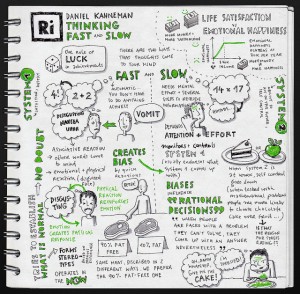I wanted to share a post about the joys of waiting.
No it is not Health curriculum based so uncover your eyes and read on.
It might be worth the…time spent before something happens.
Ha! You thought I was going to write the word ‘wait’ there.
Dang it! I just did.
In the Tom Petty and the Heartbreaker’s song The Waiting the chorus goes, “the waiting is the hardest part” and in the classroom it is no different for teachers.
There are a lot concepts to cover. There are a lot of assessments (for, as, and of learning) to record. And yes, there are a lot of students to teach. One thing there does not seem to be enough of is time. So in an average, active modern learning environment, there is little time left to permit students to engage in anything but what Daniel Kahneman refers to as System 1 Thinking. Yet, what we need to be doing, more than ever, is allowing our students and ourselves to engage in System 2 Thinking.
Here’s a graphic comparing the two. Click to enlarge.
Understanding and implementing think or wait time in my classroom has changed the dynamics of learning for my students. It is no longer a contest to see whose hands can defy gravity the fastest or longest. It has increased the number of participants and ideas shared. It has deepened our discussions in many subject areas such as Science, Social Studies, and Literacy.
For my part, questions are crafted, whenever possible, that require the awkward silences achieved while learning and thinking beyond automatic or immediate responses. Letting students know before they respond that no hands will be acknowledged until think time has happened for the entire class has helped transition my instruction.
What about Math? Yes, even Math. Here’s an example to support think/wait time in Math from Kahneman’s book Thinking Fast and Slow that I share with students and adults alike:
A ball and a bat cost $1.10.
The bat costs $1 more than the ball.
How much does ball cost?
According to the book most people get this question wrong because they are engaging the wrong system of thinking. I did. So how can we as educators afford more think/wait time in all of our classrooms?
My suggestion is to slowly integrate it into your daily instructional routines. Be intentional with a few questions in specific subject areas to start. Be patient. The silence can be deafening at the start, but is worth it.
Want to know the answer to the bat and ball question?
Take your time. You’ll get it. It’s worth the wait.

